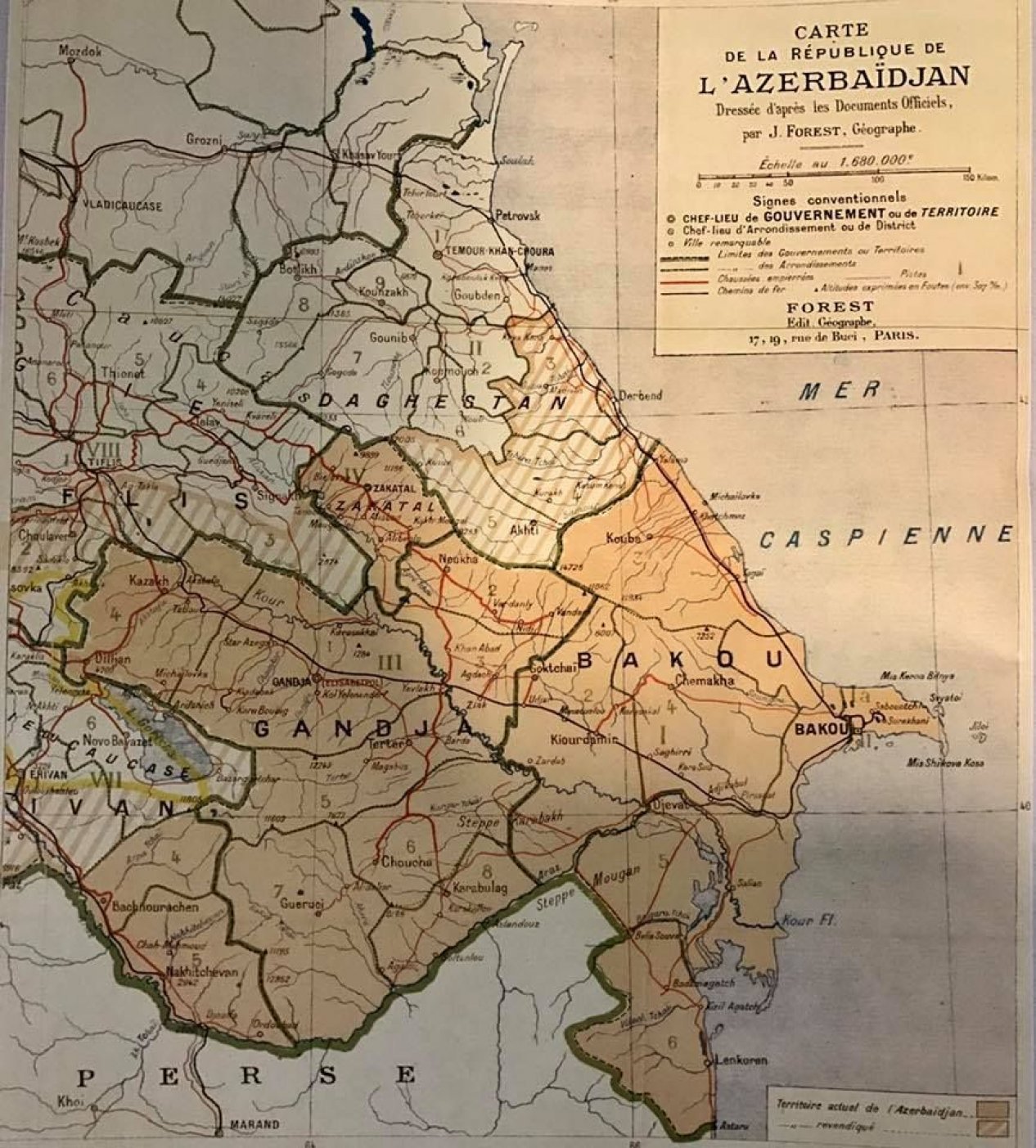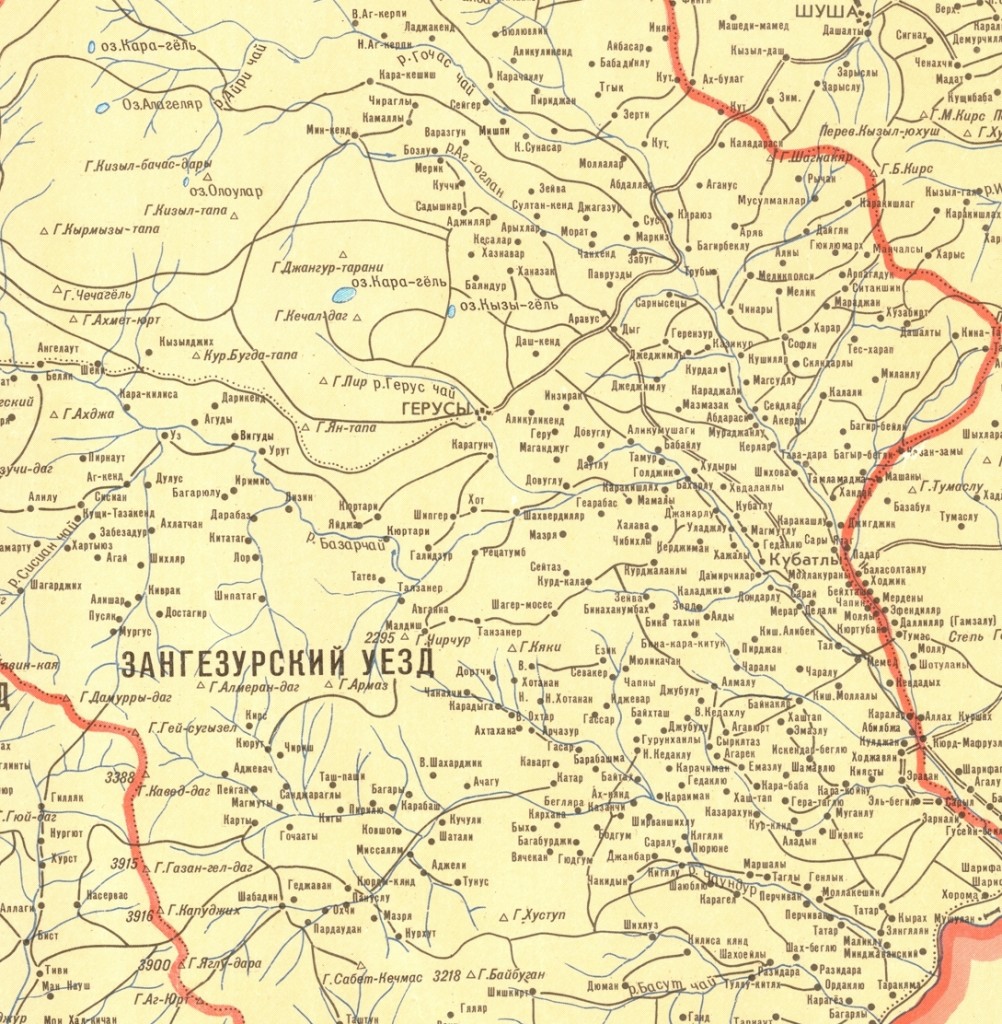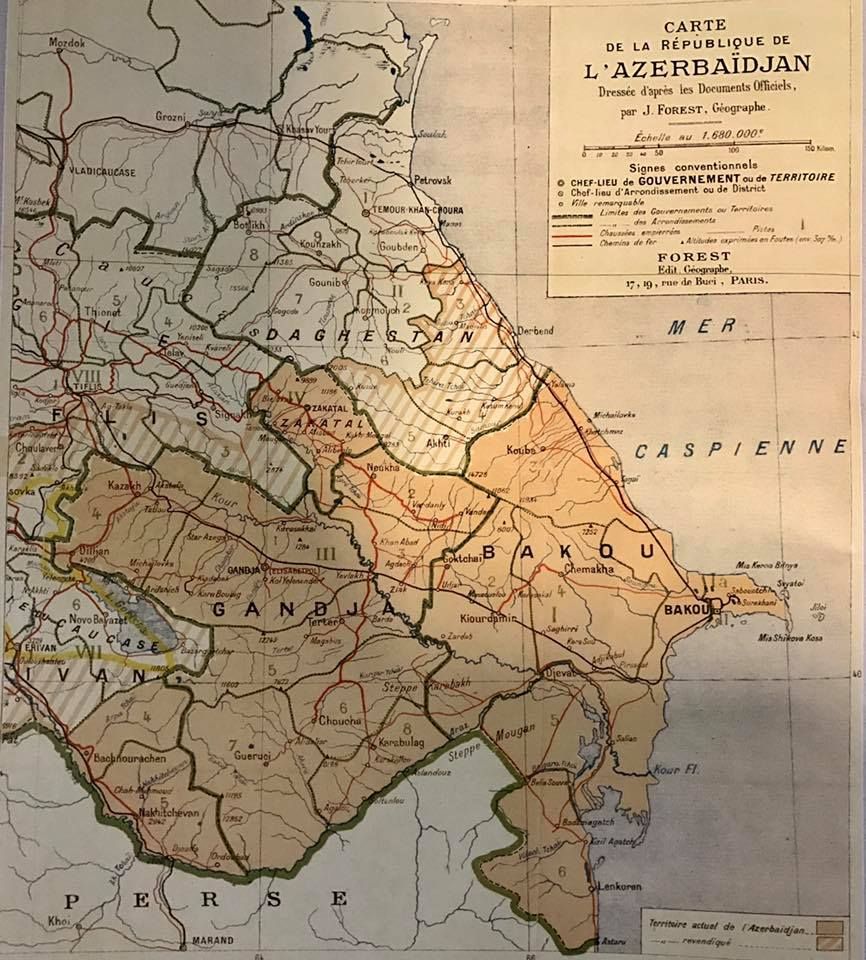
Acting Foreign Minister of Armenia Armen Grigoryan at the High-Level Political Forum on Sustainable Development of the UN stated that Azerbaijan "still continues provocations, refusing to return Armenian prisoners of war, putting forward territorial claims, trying to seize the sovereign territories of Armenia."

The reaction of the Armenian side followed the repeated statements of Azerbaijani President Ilham Aliyev regarding Zangezur.
“Our native land is Zangazur, our native land is Goycha district, Iravan. We will definitely return there, ”said the head of state.
But this doesn’t mean that Azerbaijan has territorial claims to Armenia, he added: “But I didn’t say we will return there on tanks. I said that we will return. It means that why not."
As the facts testify, Azerbaijan has every reason to speak about the historical belonging of Zangezur and a number of other territories of present-day Armenia.
Zangezur included a significant part of historical Syunik, which, according to research, consisted of the following 4 regions of Albania: Zangezur, Nakhchivan, Irevan and Goycha.
In the second half of the 7th century. Zangezur was conquered by the Arabs. In the era of the weakening of the power of the Arab Caliphate, Azerbaijani-Muslim states were formed on the territory of Albania. So, in the IX century, the Dvin Emirate appeared, which covered the entire territory of the Albanian region of Syunik, together with its eastern outskirts - Zangezur. Since the time of Muhammad b. Abu-s-Saja, Dvin was ruled by emirs from the families of Sajids, Salarids (Deilemites), Shaddadids and other rulers of Azerbaijan.
In 1022, the Shaddadids seized the Emirate of Dvin, remaining its rulers until 1130. The Seljukids, who founded a powerful state, retained the power of the Shaddadids over Zangezur. In 1130 Dvin was taken by the emir of Bitlis Kurt. On behalf of the Seljuk sultan, Shamsaddin Ildeniz in 1146-1147 to his possession in Arran annexed the northern half of Azerbaijan and the Emirate of Dvin, consisting of Nakhchivan, Dvin and Zangezur. Administratively, Dvin and Zangezur, before the arrival of the Mongols, were part of Arran and Azerbaijan, which politically were part of the Iraqi Sultanate, and then the Ildenizid state.
Under the Mongolian administrative-political system, Zangezur remained a part of the Nakhchivan Tyumen of the Azerbaijani vilayet. The same political and administrative affiliation of Zangezur was preserved in the 15th century, during the reign of the Azerbaijani dynasties of Karakoyunlu, Akkoyunlu and the first Safavids. In the late Middle Ages, most of Zangezur became part of Kapanat and Nakhchivan. New provinces were part of the region of Azerbaijan. Kapanat covered the southern half of Zangezur up to the Bargushad ridge. Sisyan belonged to Nakhchivan. Only the Zangezur and Lachin districts were part of the Karabakh region.
During the khan civil strife, the founder of the Karabakh Khanate, Panahali Khan Javanshir in the 50s of the 18th century annexed Meghri and Guney of the Karadag province, Tatev and Sisyan of the Nakhchivan, Zangezur and Kapan of the Tabriz province. Like several centuries ago, the entire Zangezur was united in one administrative unit.
Thus, both in historical-geographical and political terms, and in terms of the ethnic composition of the population, Zangezur was the original part of Caucasian Albania, and then Azerbaijan.

Speaking about the return, the president of Azerbaijan, most likely, meant the return of the indigenous Azerbaijani population to the territories now taken by Armenia, from where they were expelled as a result of ethnic cleansing.
Ethnic cleansing began even before the official transfer of Zangezur to the Armenian SSR.
The policy of genocide on the part of the Armenians is confirmed by the facts cited in the research of the Armenian author B. A. Boryan: “Armenian politicians established state power not for the purpose of governing the country, but for the extermination of the Muslim population and the seizure of its property. There was even a post of minister for pogrom affairs in the Armenian government.”
The very fact of the existence of such a ministry testifies to the existence at the state level of a targeted program for the extermination of Muslims. The policy of eradicating Azerbaijanis was carried out not only in Armenia, but also in Zangezur and other neighboring provinces.
Another incontrovertible evidence of the Armenian policy of ethnic cleansing is the census of the population of Armenia in 1919, which revealed huge losses among Azerbaijanis and Kurds, numbering 290,000 people back in 1918. After more than a year of extermination and expulsion, the number of Muslims decreased by 232,000, or by 80% and amounted to only 58,500 people.
Ethnic cleansing continued into the late twentieth century. In the late 80s - early 90s, the first refugees from Armenia appeared in the Republic of Azerbaijan precisely from Zangezur - the Azerbaijani, but artificially Armenianized districts of Kapan, Meghri, etc. By 1991, not a single Azerbaijani remained in Zangezur, Armenian "internationalists" expelled every single Azerbaijani from Syunik and Zangezur - once Azerbaijani regions.
After the Sovietization of Azerbaijan, the Bolsheviks liquidated the Karabakh General Governorship, creating in May 1920 the Karabakh Revolutionary Committee, whose powers extended within the borders of the former governorship. However, the Karabakh Revolutionary Committee did not actually control the Armenian part of Zangezur, where the detachments of Dro (Drastamat Kanayan) and later Nzhdeh (Garegin Nzhdeh) were firmly settled.
In early November 1920, the Bolshevik leadership, through Stalin, made a number of statements in Baku about the further fate of Zangezur and Nakhchivan. Their essence was expressed in the intention to transfer these territories to Soviet Armenia. Having wedged in and thus creating an Armenian buffer between Azerbaijan and Turkey, Moscow sought to deprive them of their direct borders in the future.

The real implementation of this plan began after the Sovietization of Armenia at the end of November 1920. By the decision of the Politburo and the Orgburo of the Central Committee of the ACP (Azerbaijan Communist Party) (b) of November 30 and according to the Baksovet declaration of December 1, 1920, Zangezur and Nakhchivan were to be transferred to Soviet Armenia. This decision was enshrined in the third clause of the agreement between the RSFSR and the Armenian SSR of December 2, 1920, according to which all territories of the Erivan province were recognized as Armenia, including Nakhchivan, as well as Zangezur district. But with regard to Nakhchivan, which at that time was under the control of Turkish troops, the Bolsheviks soon had to make concessions and, according to the Moscow Soviet-Turkish treaty of March 16, 1921, recognize it as part of the territory of Azerbaijan.
Nariman Narimanov wrote in telegrams to Lenin: "In favor of Armenia, Azerbaijan renounced its territory, while for political reasons the country shouldn’t have done this."
The transfer of a part of Zangezur to Armenia finally isolated Nakhchivan from the rest of Azerbaijan.
Finally, the severing of part of Zangezur from Azerbaijan served as the starting point for the implementation of the Armenian plan to seize new Azerbaijani lands. During the new stage of the military aggression of Armenia against Azerbaijan in 1988-1994, the occupation of the former Zangezur district (Lachin-Zangilan-Gubadli) was completed.
President of Azerbaijan Ilham Aliyev signed a decree "On a new division of economic regions in the Republic of Azerbaijan." In accordance with the decree, the East Zangezur economic region was created (Jabrayil, Kalbajar, Gubadli, Lachin and Zangilan regions).
Thus, concludes that the statements of the acting foreign minister of Armenia don’t reflect the real state of affairs. Azerbaijan makes no territorial claims against Armenia, and the words of President Ilham Aliyev are only a reflection of the historical truth and the rights of the Azerbaijani population, driven out of Zangezur and other Azerbaijani regions of Armenia, to return to their lands.




















